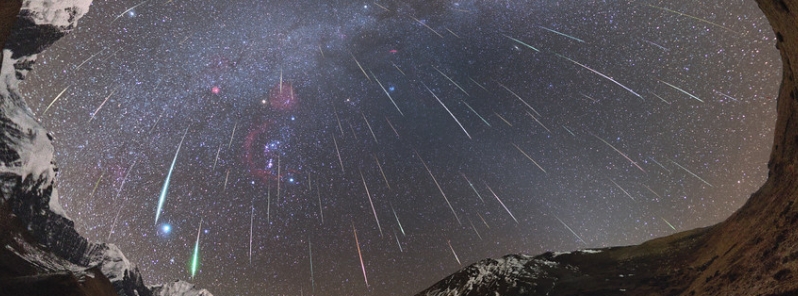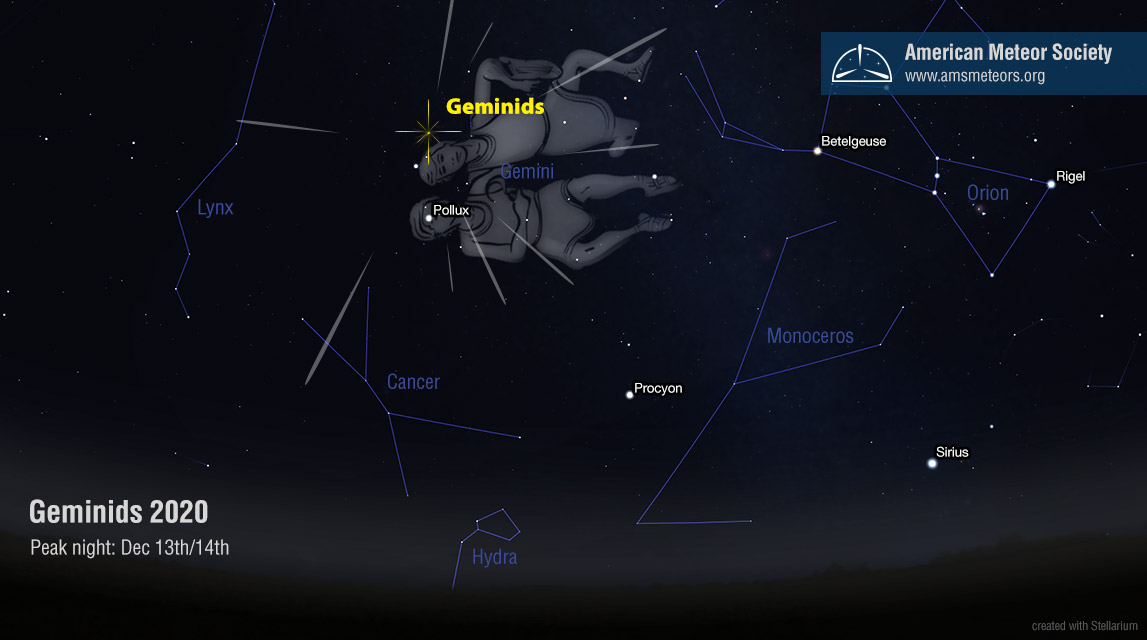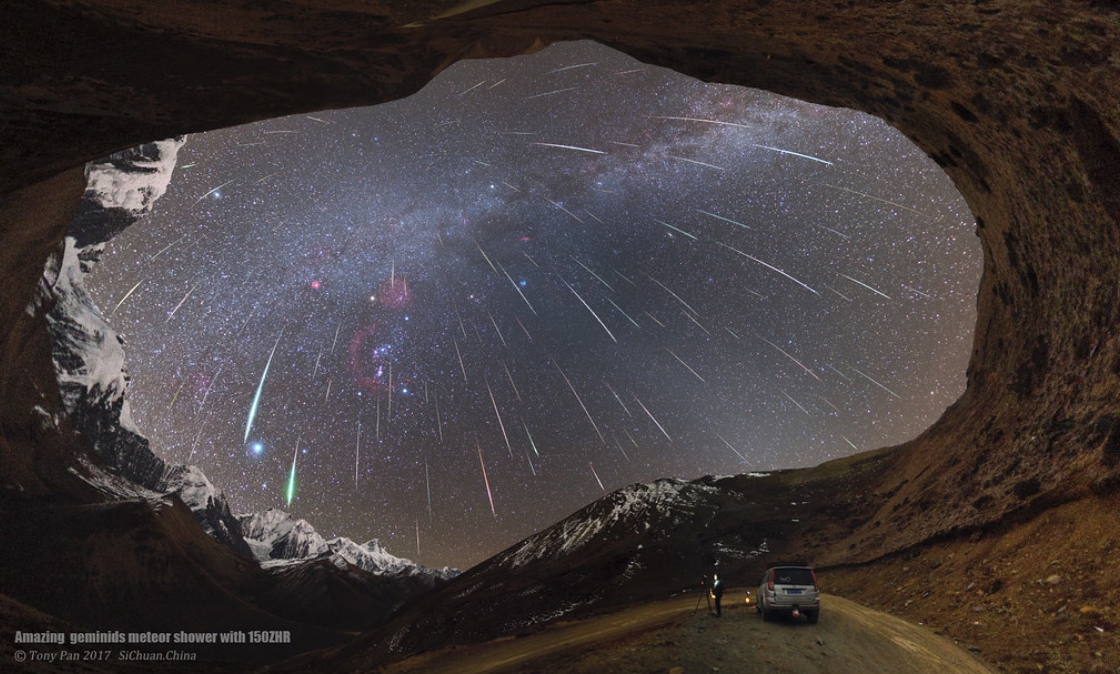2020 Geminid meteor shower to peak under a total solar eclipse on December 14

The 2020 Geminid meteor shower is expected to peak around December 14 and is likely to put the best light show at around 01:00 UTC, when its radiant point is highest in the sky. Another celestial event is set to occur on the same day as a total eclipse will be visible from the South Pacific, Chile, Argentina, and the South Atlantic between 13:34 and 18:53 UTC.
The Geminid meteor shower this year, which has been active since December 4 and will be visible in the night sky until the 17th, is expected to peak on the 14th.
Over this period, observers will have the opportunity to witness Geminid meteors whenever the constellation Gemini– the shower's radiant point– is above the horizon. The shower is set to produce the most showers in the hours around 01:00 UTC when its radiant point is highest in the night sky.
According to astronomy researcher and In The Sky founder Dominic Ford, from Oslo, Norway, the radiant point is circumpolar, which means the shower will be active through the night as it is always above the horizon.
"At this time, the Earth's rotation turns Oslo to face optimally towards the direction of the incoming meteors, maximizing the number that rain vertically downwards, producing short trails close to the radiant point."
"At other times, there will be fewer meteors burning up over Oslo, and they will tend to enter the atmosphere at an oblique angle, producing long-lived meteors that may traverse a wide area of the sky before completely burning up."
At the peak of the shower, around 120 meteors per hour can be visible in the sky. However, the zenithal hourly rate– a measure of the rate at which it produces meteors– is calculated, presuming a completely dark sky and the radiant of the shower is located directly overhead.
"In practice, any real observing sight will fall short of these ideal conditions. The number of meteors you are likely to see is thus lower than this," Ford said.
Observers from Oslo is likely to see up to 107 meteors per hour at the shower's peak as the radiant will appear at an altitude of 63° above the horizon.
According to the American Meteor Society (AMS), the moon will rise about 45 minutes later with each passing night until December 14, allowing observers to watch later in the night with each passing day.

Position of the Geminids Radiant at 22:00 UTC on December 13. Image credit: AMS
The moon will be a non-factor on December 12 as it will be a slender crescent and will not rise until dawn. "If your weather appears to be overcast on the peak night, the two nights prior and the one night after the peak will also produce impressive activity."
Robert Lunsford from the AMS, sharing his viewing tips, said he prefers facing eastward and watch Geminid meteors shoot from the northeaster horizon during the early evening hours.
When viewed at this position and time, the Geminid meteoroids can only shoot across the upper portions of the atmosphere. Most of the long streaks appear low in the north or south.
During the peak hours, Lunsford said he prefers facing due south and have the radiant drift westward through his field of view, allowing him to also see the minor showers that are active in the same region in the sky.
"Don’t go outside and stand to try and view the Geminid activity. Your neck will quickly stiffen and you will soon tire. I suggest using a comfortable lounge chair that allows you to look half-way up in the sky comfortably," Lunsford added.

2017 Geminid as seen in Sichuan, China. Image credit: Tony Pan/Flickr
Meanwhile, another spectacular celestial event will take place later that day. The Moon will pass in front of the Sun between 13:34 and 18:53 UTC, creating a total solar eclipse.
The solar eclipse of December 14, 2020, takes place 1.8 days after the Moon reaches perigee. During the eclipse, the Sun will be in the constellation of Ophiuchus. The synodic month in which it takes place has Brown Lunation Number of 1212.
The eclipse is preceded two weeks earlier by a penumbral lunar eclipse on November 30. These eclipses all take place during a single eclipse season. Totality is expected to last for a maximum of 2 minutes and 10 seconds at the point of greatest eclipse.
And just seven days later, a December solstice will occur at 09:47 UTC on December 21, followed by rare great conjunction of Jupiter and Saturn at 18:11 UTC.
The pair may appear as a single bright star, which night sky enthusiasts call a "Christmas star".
Featured image credit: Tony PanFlickr

Commenting rules and guidelines
We value the thoughts and opinions of our readers and welcome healthy discussions on our website. In order to maintain a respectful and positive community, we ask that all commenters follow these rules:
We reserve the right to remove any comments that violate these rules. By commenting on our website, you agree to abide by these guidelines. Thank you for helping to create a positive and welcoming environment for all.